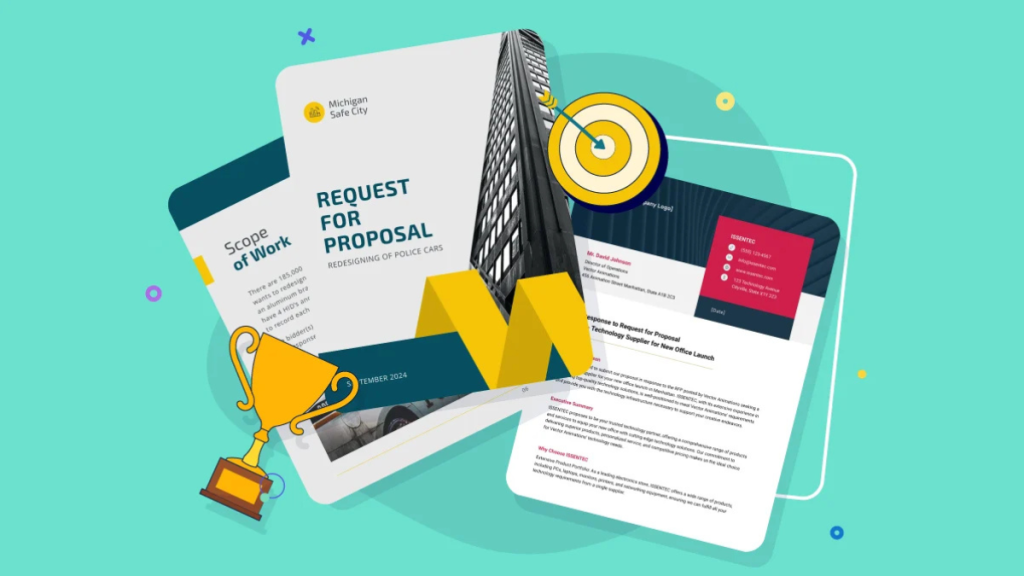Responding to an RFP is a complex task that needs a multi-pronged approach, fighting every minute against time. In my time as a consultant, I have helped numerous enterprises tackle one and offer them solutions suited to their needs. In that time period, I understand how difficult it can be trying to respond to two or more simultaneously. The great news, though, available to us all, is that technology gets smarter every day. With tried-and-true technology, as well as my experience, companies are able to progress towards smarter, quicker, and better RFPs. Take a look with me at the five technology trends that are pushing companies to embrace smarter processes, all while sprinkling stories from my interactions so it isn’t dry. Excited to dramatically improve your bidding? Let’s begin!
1. Uses of AI for Automation of Tedious Work
The world of RFPs has a new revelation in sacrificing the unnecessary tasks that no one is interested in. The AI applications are smart enough to start pre-filling the dull sections, like the name of the company or standard accreditations from previous proposals. AI tools are not one-and-done, as they become more useful over time; content that would require hour after hour of manual input will be suggested effortlessly.
The first time I worked on an RFP for a client, I paid a half a day’s worth of work to retype boilerplate answers about their business history. Then AI RFP software, which stored and inserted details in seconds, came to my rescue like an intern who works twenty times harder than needed. Now, combine AI with time-tracking software such as Controlio that tracks how much time you’re saving, and you’re left wondering how you survived without it. Just a final note: while AI does the simplistic tasks, remember your value proposition will always require a human touch.
2. Centralized Content Libraries for Easy Access
Forget about searching through endless folders for that “just right” case study. Content libraries based in the cloud hold all RFP materials—old answers, references, and even certifications—in one location, which can be searched. With AI helper search, finding content takes mere clicks, eliminating multiple-step collaboration across groups and teams.
Due to my team taking longer than expected to locate an updated pricing sheet in shared drives, we missed a critical deadline. Everything now shifts to using a centralized library where materials are tagged and searchable, making a 24-hour librarian feasible. These libraries foster collaboration, which allows contributions from other experts and even pricey teams to enhance the integration and polish of your response.
3. Tools That Foster Collaboration and Team Synergy
Completing an RFP is a team effort, and modern collaboration mechanisms such as Slack, Microsoft Teams, or Google Docs serve as the playbook. Communication, editing documents, and tracking task progress are done in real-time, which allows for proper alignment, even when teams are split across multiple time zones. This is paramount in the case of desperate startups or remote teams managing tight deadlines.
While working on a tech client’s complex RFP, our team used Slack to chat and Google Docs to co-edit responses. It halved revision time. Use these tools to divide responsibilities, track participation, and prevent overlooked, unfinished details. Responses will be delivered in a delicate fashion instead of rushed at the last minute.
4. Specialized Design Software for Proposals
Visually appealing RFP responses can make one stand out amongst other text-heavy bids. New design software, like Canva for Business or Proposify, has RFP-specific templates available with a drag
Conclusion
Responding to RFPs is time-sensitive, and utilizing advanced technologies is a necessity rather than an option. The five trends mentioned—AI automation, content repositories, collaborative systems, and design tools—enable companies to optimize workflow, team collaboration, and improve the quality of submitted proposals. Based on my consulting experiences, a lot of these technologies make RFP preparation seem like an overly complex chore; however, they transform it into a well-planned, streamlined, and imaginative process. Companies can utilize these technologies to complete tasks in a more timely manner, reduce the likelihood of making mistakes, and create answers that are tailored for specific markets and are more competitive. RFPs are becoming more dynamic, and adopting the trends cited earlier will ensure that proposals are not only submitted but will leave a lasting impression. Interested in transforming your RFP process? The solutions are available; now it is time to deploy them.

